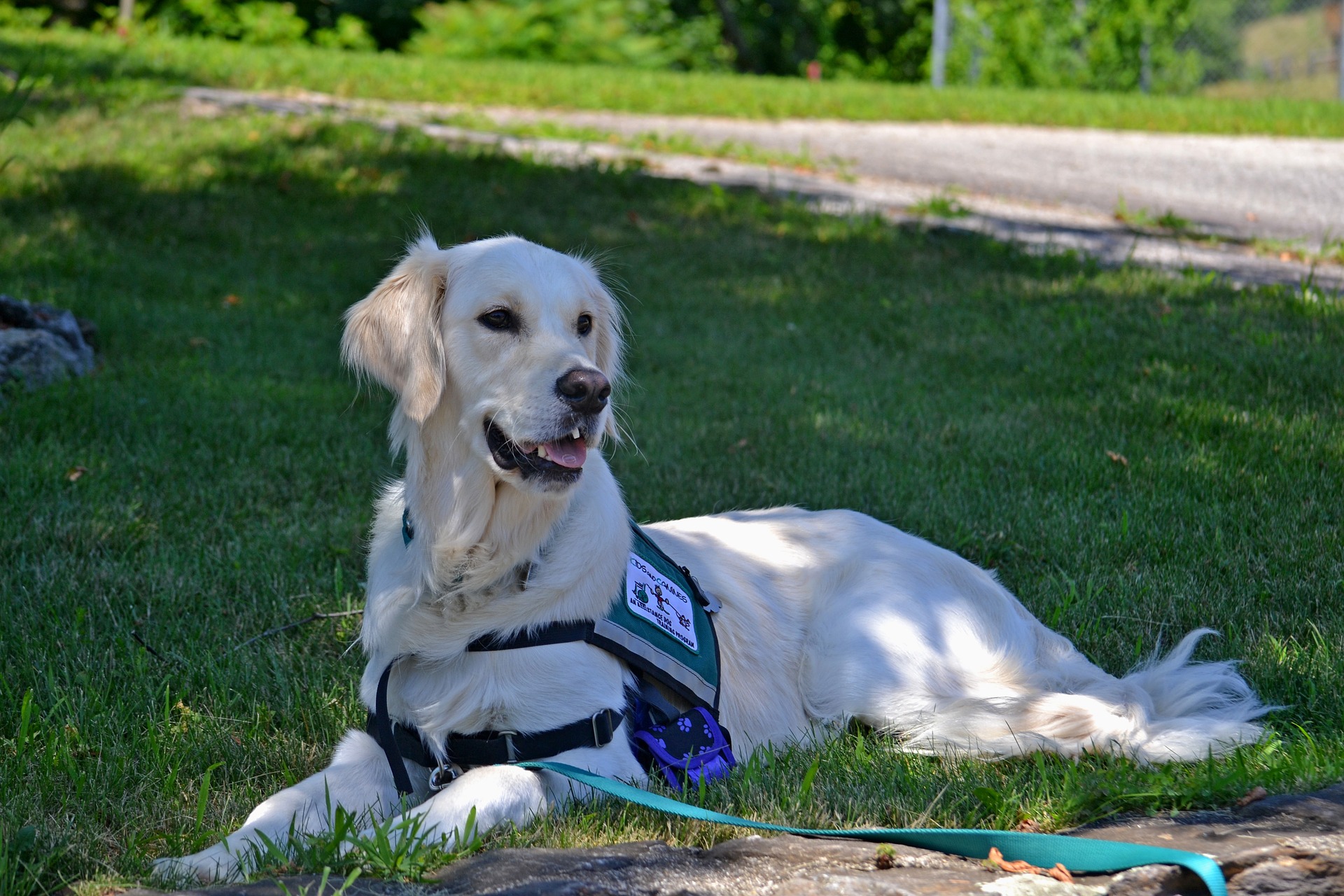Dogs are not only “man’s best friend”–many perform crucial jobs and support their owners and others. Let’s review the differences between service dogs, therapy dogs, and emotional support dogs.
Service Dogs
Service dogs are the only dogs that are legally allowed to accompany their owners anywhere without discrimination. The Americans with Disabilities Act (ADA) outlines their legal rights and the rights of the people who require them. Service dogs receive rigorous behavioral training to ensure that they are able to focus solely on their job without disrupting others or getting distracted and putting their owner in danger. The dog is trained to perform very specific services to meet the needs of a person with a particular disability–be it physical, mental, intellectual, or psychiatric. Some examples include:
- Diabetic alert dogs signal to their owners when they sense their blood sugar levels dropping rapidly.
- Guide dogs that assist their blind owners with day-to-day activities.
- Hearing dogs will alert deaf or hard-of-hearing owners to sounds such as a knock on the door.
- Some dogs are trained to sense when their owners are about to have a seizure or panic attack and will provide the necessary help to get them into a safe position.
Service dogs are allowed to be anywhere their owner is, even in situations where ordinary pets are not permitted. Additionally, airlines cannot charge extra for a service dog to accompany its owner.
Therapy Dogs
These dogs don’t go through the strict training that service dogs do. Rather, they are often selected later in life because of their temperaments–therapy dogs are calm, quiet, and happy to meet new people. They are trained to accompany their owners to volunteer at institutions such as hospitals, schools, and nursing homes. Research over the years has proven that interacting with therapy dogs, even for just a few minutes, helps to significantly decrease stress levels and increase serotonin. They are brought onto college campuses during exam times to help students deal with the pressure of school, and frequently visit hospital wards to bring joy in an environment filled with so much fear and worry.
Therapy dogs do not have rights provided by the ADA as service dogs do. There is no specific training program or certification to make a dog a therapy dog. In general, if you want your dog to be a therapy dog, you join an organization that has established relationships with these institutions and can provide some training and insurance for your dog prior to their visits.
Emotional Support Dogs
These dogs are also not official service dogs and do not have rights under the ADA. Emotional support dogs are not given rigorous training from puppyhood to provide services the way that service dogs are. Technically, any pet that makes the owner happy is an emotional support animal. However, these animals can be extremely important for people with mental illnesses like anxiety and depression. Psychologists can prescribe an emotional support animal for their patients who are diagnosed with a major disorder.
Emotional support dogs have minimal rights, provided the owner has a letter written by their psychologist indicating that they need the animal. They cannot go anywhere, the way that service dogs can; however, the Fair Housing Act requires that housing providers offer “reasonable accommodations” for emotional support dogs even if the building doesn’t usually allow pets. Airlines used to have to allow emotional support dogs to accompany their owners in the cabin; however, as of January 2021, this is no longer required.
All Dogs are Special
At Gulf Coast K9 Dog Training, we believe that all dogs play an special role in their owner’s lives. Whether a service dog or a cherished pet, we love our dogs. If your beloved family member needs a little encouragement and training, we are here to help.





